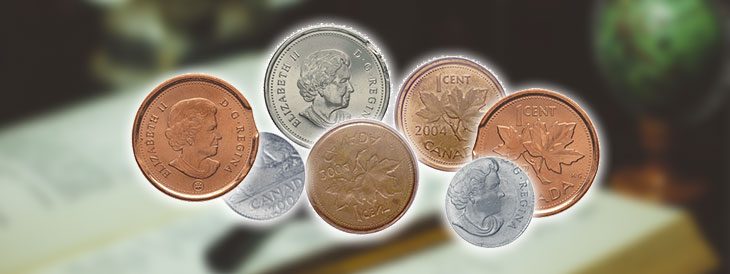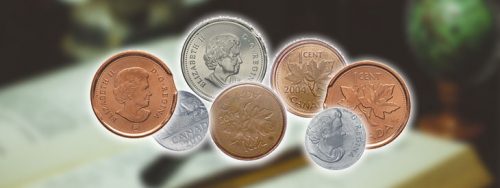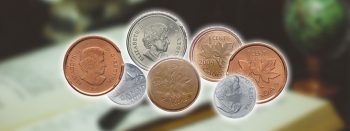Last updated on May 2nd, 2024 at 03:35 pm
Last Updated on May 2, 2024 Posted by Colonial Acres Coins
When going through the production process, coins can obtain various kinds of damage due to accidents or bad minting equipment. Having a visibly flawed coin doesn’t always mean it’s worth less than the spotless ones. Quite the contrary, rare Canadian coins with some types of errors can be significantly more valuable. It is important to know how to recognize the errors that can be seen most often. Some of the recurring ones include the die crack, which can be noticed in denominations or years, then there are cuds, dots and many more. Read on to get informed about the major errors and how to recognize them.
- Die crack – superficial or pronounced
- Retained broken die and cuds
- Accumulations and dots
Die Crack – Superficial or Pronounced
This error can appear in denominations or years due to the excessive amount of pressure applied to the coin. These cracks can be superficial, visible on the surface or with deep and pronounced cracks. You can recognize this damage by the lines that can go on the die and all over the coin or just on the effigy. Metal is especially prone to cracks on thin or weak spots, so that is why this type of error is the most present one during the minting process. Any deviation from the standard can make these coins pretty valuable. Their uniqueness and rarity can have the effect on their worth.
Retained Broken Die and Cuds
If a part of the broken die on the coin covers the design part, that is how you’ll know that it is retained broken die. This is a category of die cracks where the crack reaches the rim of the coin in more than one place. Cuds are the kind of errors where the cut should start from the rim and continue into a distinct crack that can sometimes damage the design. The reason why these kinds of errors can be worth a lot has to do with the combination of their rarity and damage or cuts that make it a special piece.
Accumulations and Dots
Accumulations belong to the die chip category which are small pieces on the coin that don’t belong there or aren’t a part of the design. These appear on spots that underwent the most pressure which would be the edges of letters or numbers. The parts protrude noticeably from the design and can be easily felt under the fingertips. Dots, on the other hand, appear due to spoiled paint or the quality of the metal used to mint a coin. It can also be an example of gas bubbles that expand during the striking process, when the heat rises as well.
Go to Colonial Acres for All the Questions About Coins
Whether you own a couple of error coins or have inherited the collection and want to learn more about the hobby, go to the Colonial Acres website. Our knowledgeable staff will fill you in on all the treasures that await those who like to collect rare Canadian coins. You are able to shop for coins, sell them, or participate infrequently held auctions with unique and beautiful error coins of all sorts. There are numerable tips for those who are planning to start a collection as well as coin clubs. Simply go to colonialacres.com and uncover the world of collecting impressive pieces of art as a pastime.




